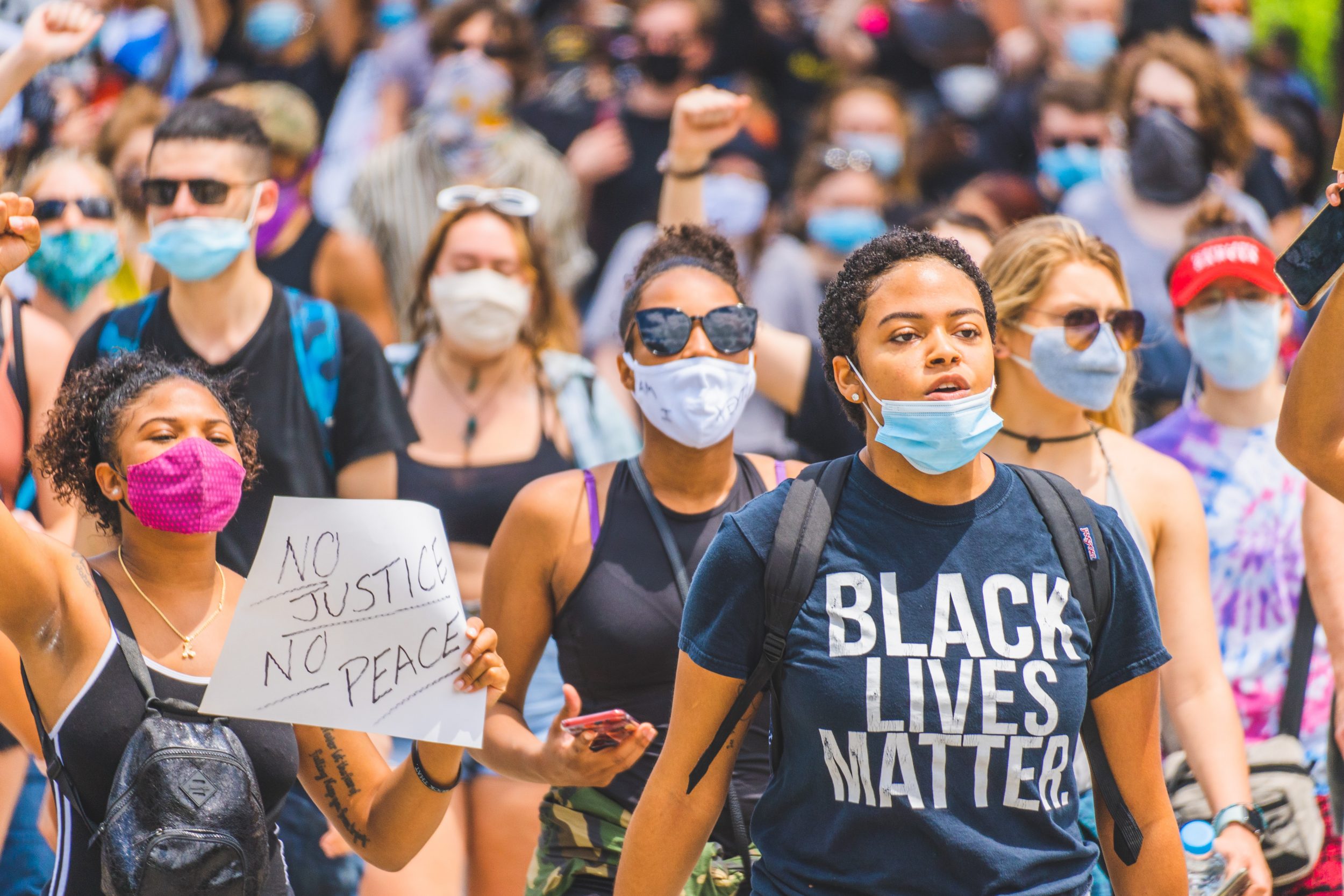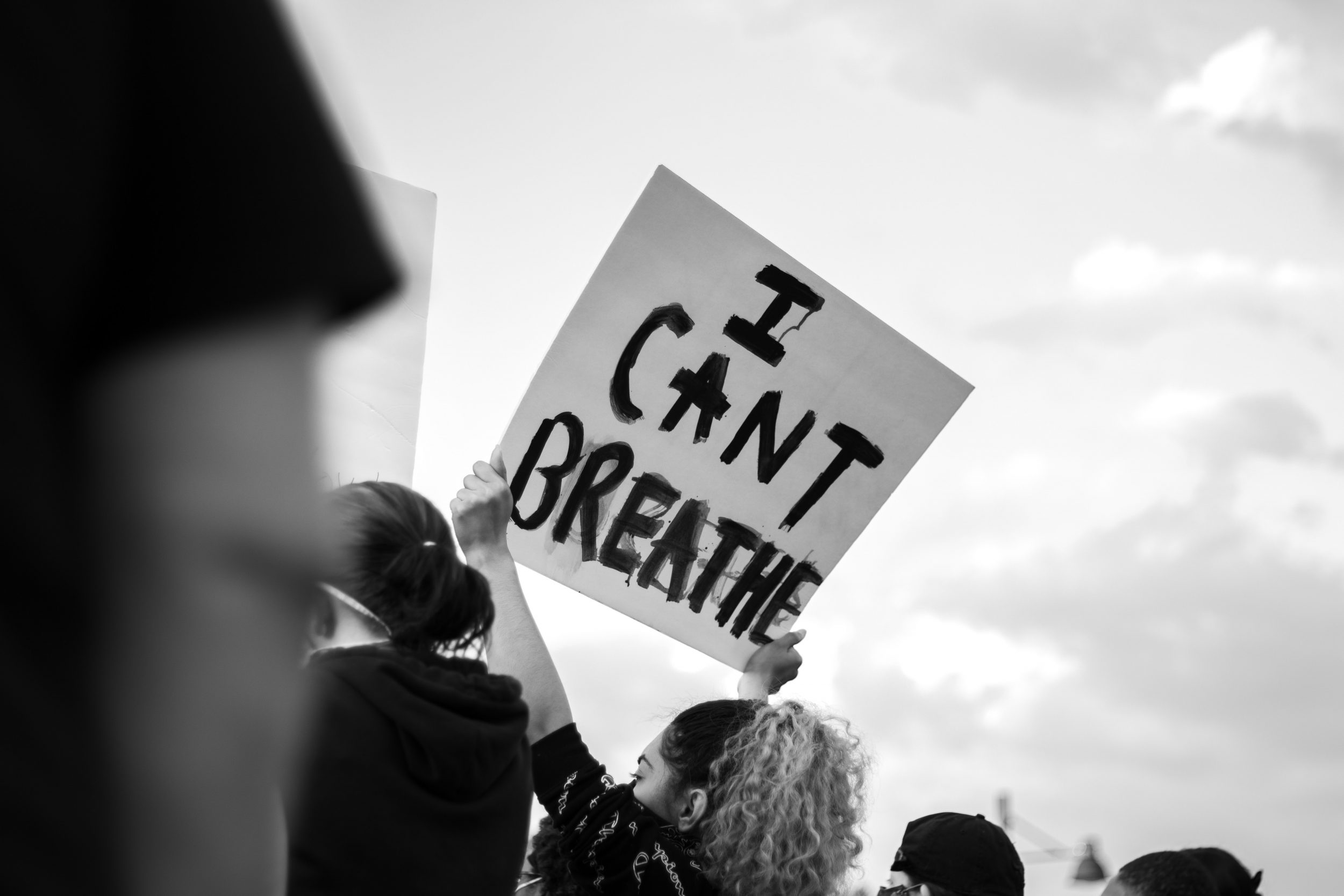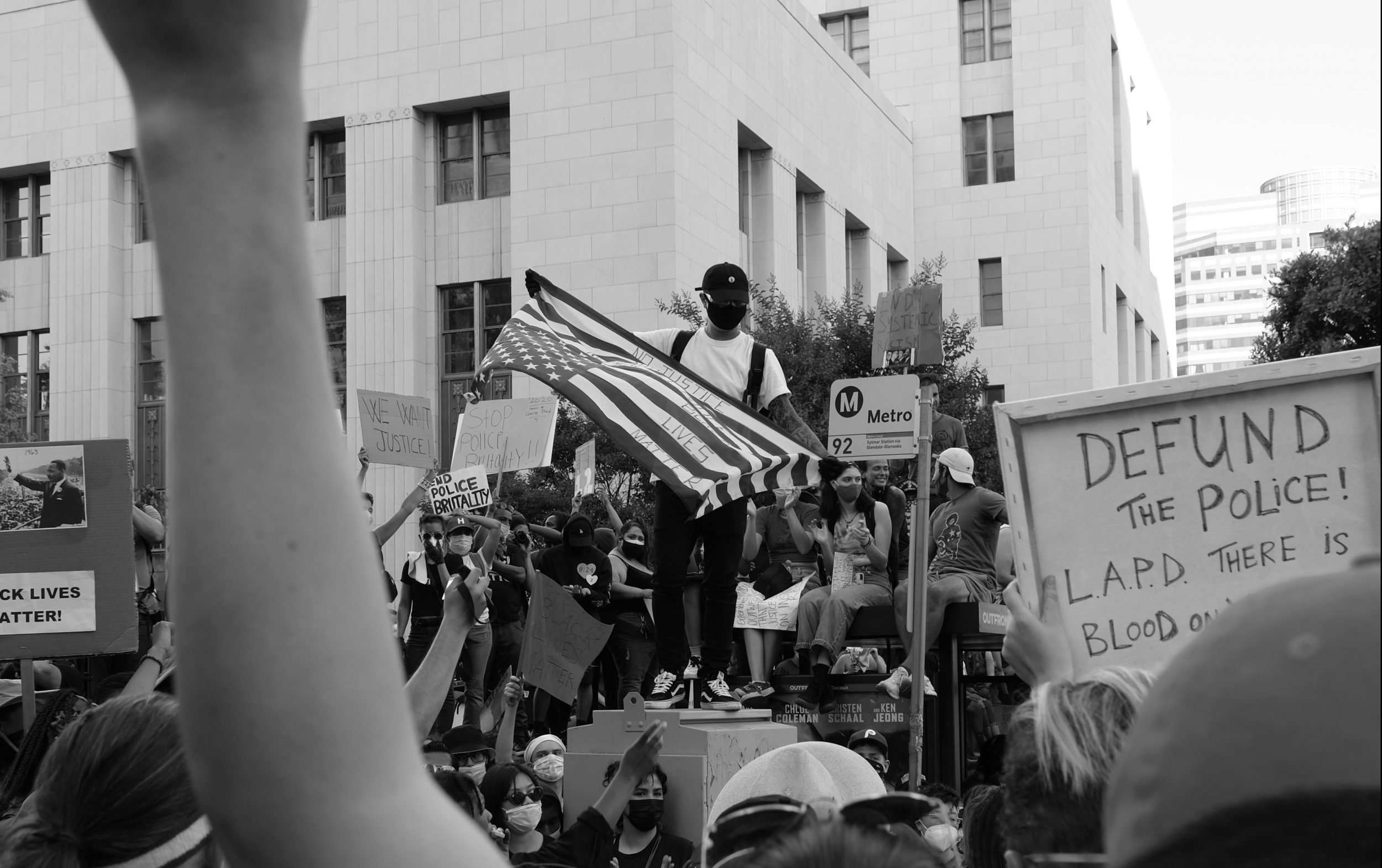 In the aftermath of the horrifying murder of an unarmed Black man in the US, LSE Professor Shakuntala Banaji reminds us that George Floyd’s death is part of a long and frightening history of racist violence, and reflects on the different types of racism and the barriers to social justice that result.
In the aftermath of the horrifying murder of an unarmed Black man in the US, LSE Professor Shakuntala Banaji reminds us that George Floyd’s death is part of a long and frightening history of racist violence, and reflects on the different types of racism and the barriers to social justice that result.
Although a recent wave of global protests against police brutality and racial discrimination have kept alive the hope for social transformation, the news in 2020 has been replete with injustice and trauma.
George Floyd: choked to death by police on May 25, 2020.
Breona Taylor: shot to death by police as she slept on March 13, 2020.
Ahmaud Arbery, stalked, hit with a truck and shot to death by white supremacists on February 23, 2020.
It is not easy at a time of such rending grief and pain, which triggers historical and political trauma for the families of those murdered as for many Black citizens around the world, to be sure how any writing will be received. Therefore one can only set out to write with a sense of deep humility for the many who are already suffering trauma and still coming out to risk so much for the sake of others. All four police officers in George Floyd’s murder now face charges, which would not have happened if not for the civic protests against the systemic racism in the police force.
The cases named above are not isolated cases. They are part of a long and frightening history: Thousands of Black, Indigenous, Muslim and citizens of colour in Australia, Brazil, India, Canada, the US have been beaten, shot and suffocated to death by racist police, political or corporate-linked vigilantes or supremacist mobs. Mediatised lynchings and murders are a commonplace in India, Pakistan, Colombia, Brazil, Israel and Palestine.
Let’s not forget Zhora Bibi – a 7 year-old maid – allegedly kicked to death by her employers in Pakistan, or Miguel da Silva, the 5 year-old child of a Black maid in Brazil, who fell to his death while his mother was forced to walk her employer’s dog. All these stories are taking their toll and these barely touch the edges of all that has been happening across the globe.
In parallel, 400,000 lives have been lost to often-incompetent and self-serving government responses to Covid-19, which is destroying families and livelihoods, sparking ever-new forms of Covid-linked racism and stigma, as well as on occasion, a deep humanity and social solidarity.
Who gets to define our humanity?
In her phenomenal novel Beloved, Toni Morrison noted that ‘definitions belong to the definers, not to the defined’. Making a similar point about the importance of self-definition and representation, in a 1982 speech, activist poet Audre Lorde explained how she’d finally ‘learned that if I didn’t define myself for myself, I would be crunched into other people’s fantasies for me and eaten alive’. Historically, marginalised communities of Black, Indigenous and people of colour have been fighting to take control over definitions of who we are, and over our own lives, for decades, even centuries.
Self-definition, solidarity and lasting social justice take place more easily when we hold compassionate understanding of each other’s needs, histories of oppression and resistance. Young people, and those in communities of colour in particular, are proving themselves willing to learn and to lead – and to take courageous risks.
There is no doubt that the white supremacists worldwide and the powerful regimes which feed on racism will not easily be forced to change. While people are trying to stay alive, and to protect their mental health, more rights are quietly being stripped away, more hatred and misinformation is being circulated. Some governments and corporations are trying to consolidate their power, while white and Hindu supremacists refute even the most basic claims for justice and humanity.
There are haunting overlaps between new and old racist tropes and reactions. Black workers are always on the frontline of capitalism’s pursuit of profit. And they suffer the most. Even wearing a mask to shop for food or take public transport – an act of civic solidarity – can result in insult, assault or death for anyone who isn’t white.
Jasmin Zine writes that ‘Not having to think about how one’s body is read by others when wearing a mask is a privilege of whiteness that eludes racialized groups’: Calvin Munerlyn lost his life because he asked customers to behave safely. Jermon Best and DiAngelo Jackson were harassed and ejected from a store by police for wearing their masks. The global politics of racism casts a long shadow. Sometimes it feels that dealing with, fighting, enduring local horrors like these, must be enough. But it’s imperative, if our anti-racist struggles are to prosper and to succeed, that we see the connections with the lives of others, and with class hierarchies and racisms within our own communities.
International histories of racism and violence
In the UK, we have participated in and continue to take part in multiple processes which are supposed to reform racist systems: attempts to decolonise curricula, to make hiring practices more equal, to address health inequalities, to redress aggressive policing; briefings, papers, consultations, commissions. We’ve written letters and petitioned our representatives about bias in the prison system, the legal system, the judiciary, the media.
Some things have changed – but only after great and inexcusable suffering. Some inequities have been acknowledged; but only after further lives have been lost: the war on Iraq, the death of Stephen Lawrence and the Macpherson Report, the Windrush Scandal, the Grenfell Tower disaster.
So much remains unaddressed. We must remember the histories of racism and unfulfilled promises in the context of the protests we are seeing now across the world. Protestors in Bristol created history in June with the toppling of the statue of Edward Colston, a slave owner and a revered member of British political class of the 17th century. Many in Bristol had been petitioning the council to acknowledge Colston’s brutality for several years, and had only met with failure. On Sunday, they revolted.
In Colombia, despite a decade long peace process, one indigenous land defender has been murdered by poorly concealed state-sponsored militias and criminal gangs every three days since 2016. Many of those murdered are Afro-Colombian, from ‘unarmed land defender’ groups, attempting to prevent illegal mining and other environmental destruction. Again, those who should be honoured for teaching and leading good citizenship find themselves and their loved ones dead.
There are parallels between anti-Muslim and anti-Dalit atrocities in India and those against Black citizens by police in the US. While the structures of exclusion and discrimination in India and the US have distinct, vicious histories, the psyches and language of the perpetrators – Hindu supremacists, upper caste bigots, white racists and supremacists – are strikingly similar, just as their leaders and icons are: all encourage dehumanisation, historical erasure, misrepresentation and murder.
Barriers to social justice and change: backlash and denial narratives
Recently, reacting to the murder of George Floyd by white policeman Derek Chauvin, social media news feeds have been replete with both genuine and fake remorse, self-doubt, and requests for education on racism: ‘What’s gone wrong? How could such a thing happen?’
We live in societies so infused and structured by overlapping ideologies and forms of prejudice and discrimination which have long served the interests of those in power, that the hand-wringing happening now will quickly be replaced by a backlash against those wishing to dismantle racist structures. Amnesia may happen even amongst those who consider themselves non-racist, and liberal.
I’ve interviewed people who believe not only that those who are lynched in India ‘provoked it’ but also that Black people, Dalits and Muslims are inherently criminal, pampered by the state, and that the police who kill, do so to maintain law and order. Many current societies thrive on hate – and respect the structures which condone it. Even some of our fellow-citizens, who acknowledge that the brutal murder of a Black citizen or Muslim citizen by police or army, or the torture of Iraqi prisoners in Guantanamo or Abu Ghraib should not have happened, view these events only as aberrations. Many are incapable of seeing state condoned murderous violence as custom and practice in racist police forces, xenophobic armies, in nations built on othering and dispossession.
Meanwhile, false narratives, histories and representations of the formation or suppression of the humanity, subjectivity and resistance of people of colour abound: from the BBC’s choice to call a pogrom against Muslims in India ‘a riot’ or the bombing of a school in Gaza as ‘clashes’ to the Daily Mail’s decision to vilify refugees and amplify the views of the most racist politicians; from the conferences where all-white or all-Hindu upper caste panels are the norm to the university classrooms where Black culture is cool but Black students and teachers are not. All narratives and representations reflect the values and experiences of their makers.
Joining the dots between different types of racism
One doesn’t have to look far to find senior politicians, academics and commentators justifying racism. Some are even people of colour themselves. It’s one thing to know in theory that racism and anti-Blackness are on a spectrum – microaggressions, derogatory comments, subtle bullying, colourism, biased hiring and firing, prejudiced judgments about the work of Black, Brown, Muslim, East-Asian and Dalit visitors, students or employees, pay gaps, assaults in public spaces, unjust incarceration, brutal policing, racial surveillance, unjustified wars and occupations, institutional racism, structural racism, violent atrocities, attempted genocide – it’s quite another to understand the connections between these processes viscerally, and to take action against them in one’s everyday life simply because that is the right thing to do.
Mentioning the connection between everyday racism and police brutality is often treated as impolite, insane political correctness, identity politics, whining or libel. Pointing out that someone participated in a racist process in a university is often treated as an insult which must be fought tooth and nail. ‘We’re not racist’ insist the most institutionally racist organisations, as they scramble to cover their failures and crimes.
In parallel, there’s plenty of racism and xenophobia in communities of colour the world over: suffering racism doesn’t mean we’re immune to perpetuating it. I’ve encountered powerful anti-Blackness all over Asia and in many communities and workplaces in the UK. Islamophobia kills dozens every month. If those of us in universities and schools do not acknowledge our complicity, and those of us in communities of colour do not confront anti-Blackness, casteism, xenophobia and Islamophobia in our own communities and communities of practice, we will continue to be part of the spectrum that leads to direct, brutal racist violence. There are plenty of resources out there – Arundhati Roy, Ibrahim X. Kendi, Angela Davis and bell hooks just for starters – so there is no need for any of us to be wilfully ignorant unless that is our choice.
With thanks to Ruby Chikwiri and Ram Bhat for comments on a draft version.
This article represents the views of the author, and not the position of the Media@LSE blog, nor of the London School of Economics and Political Science.
Featured image: Photo by Clay Banks on Unsplash





